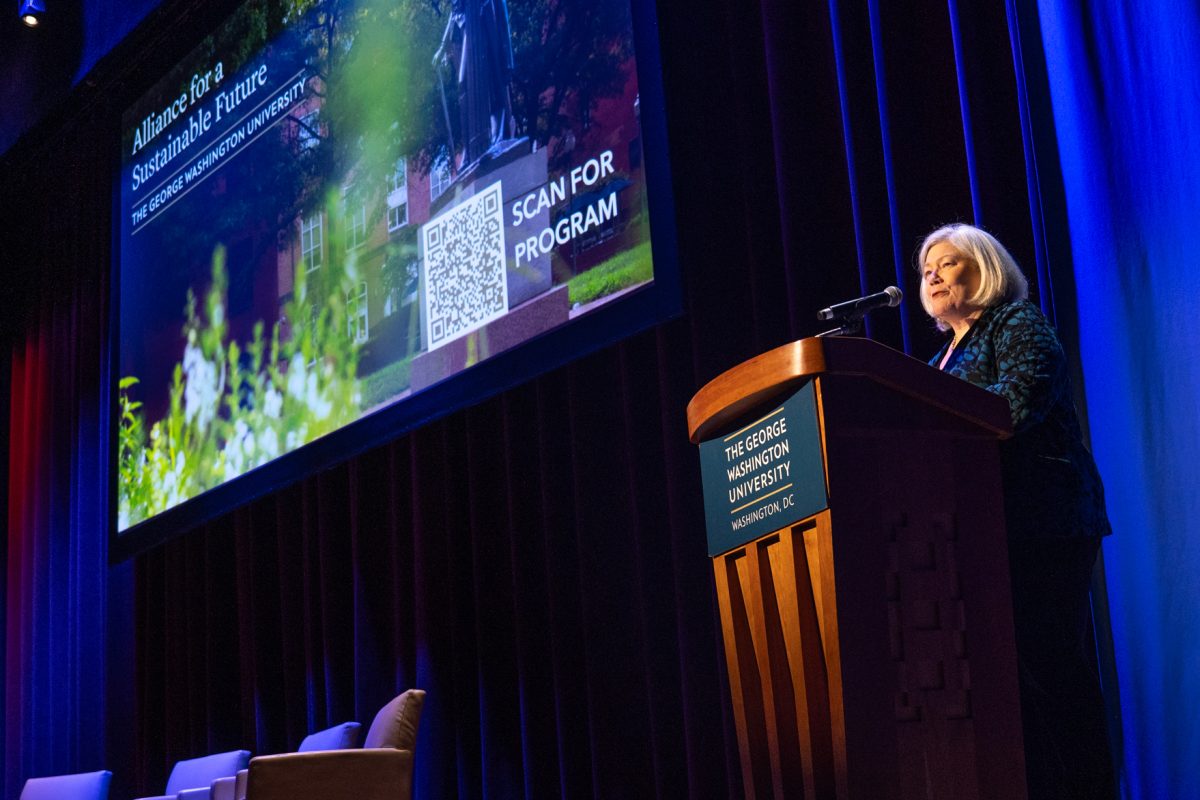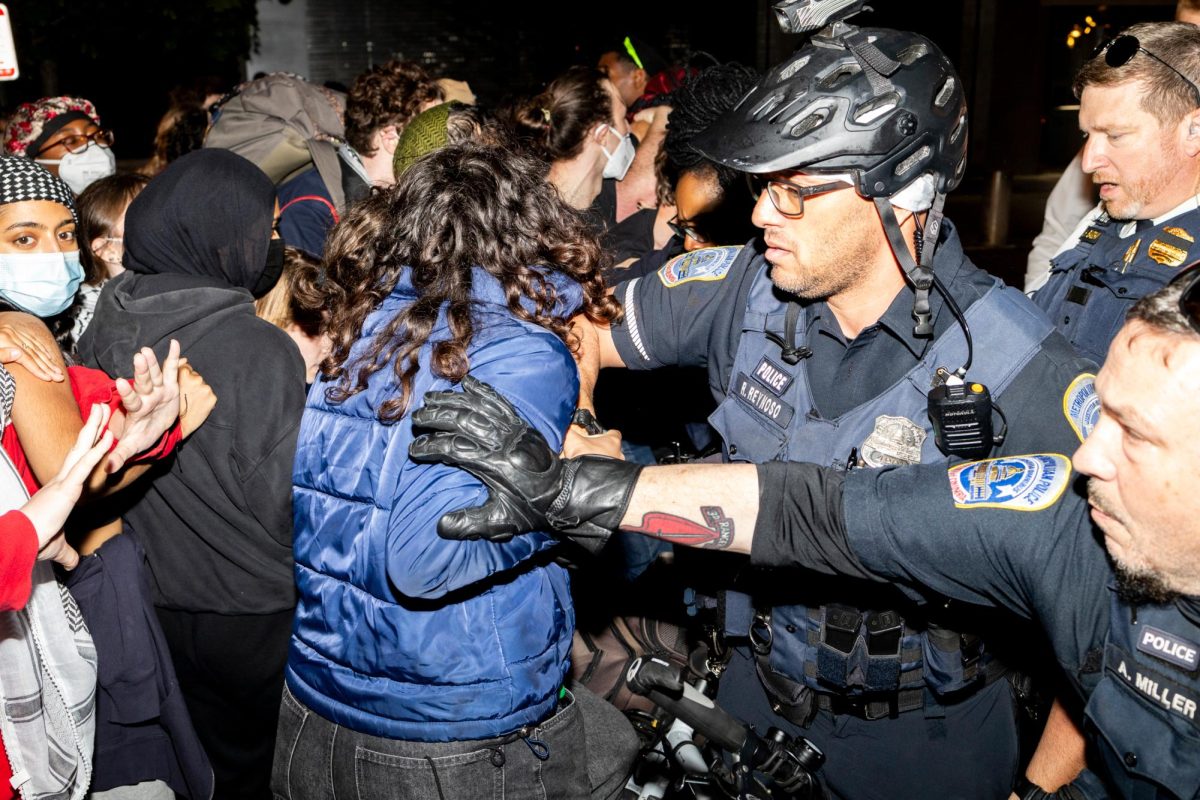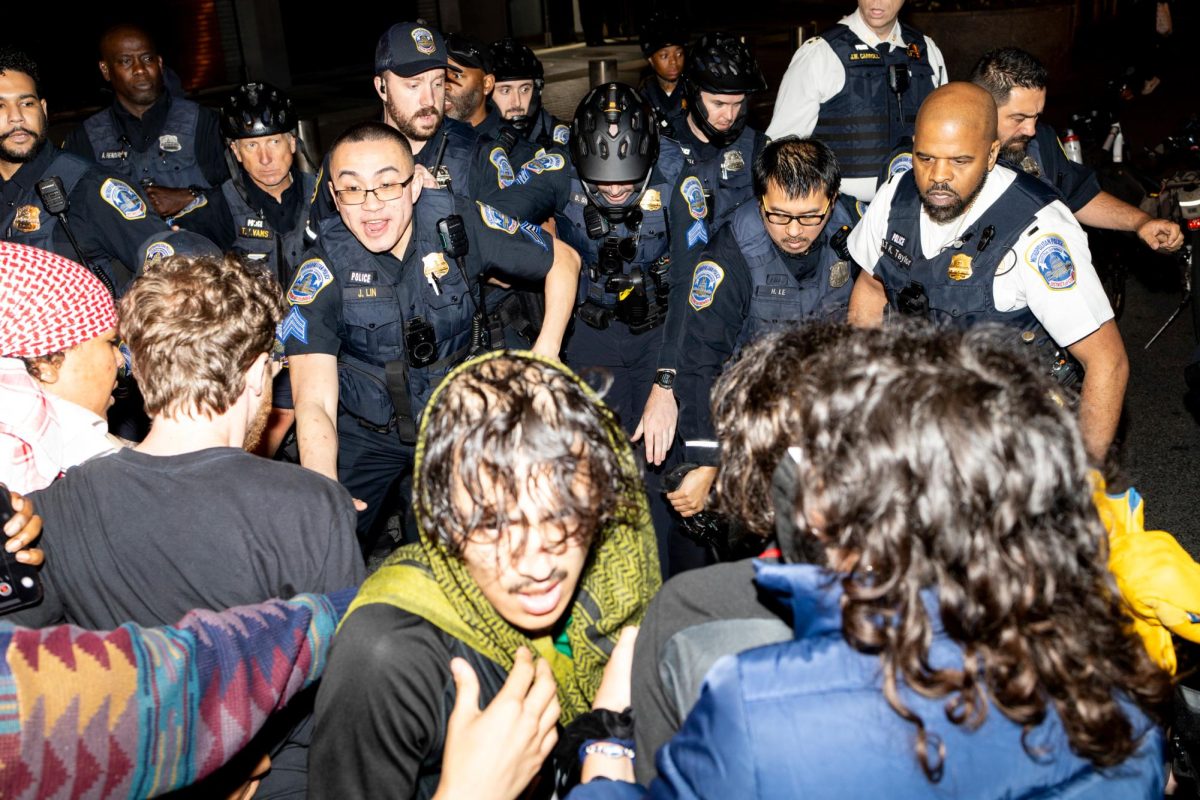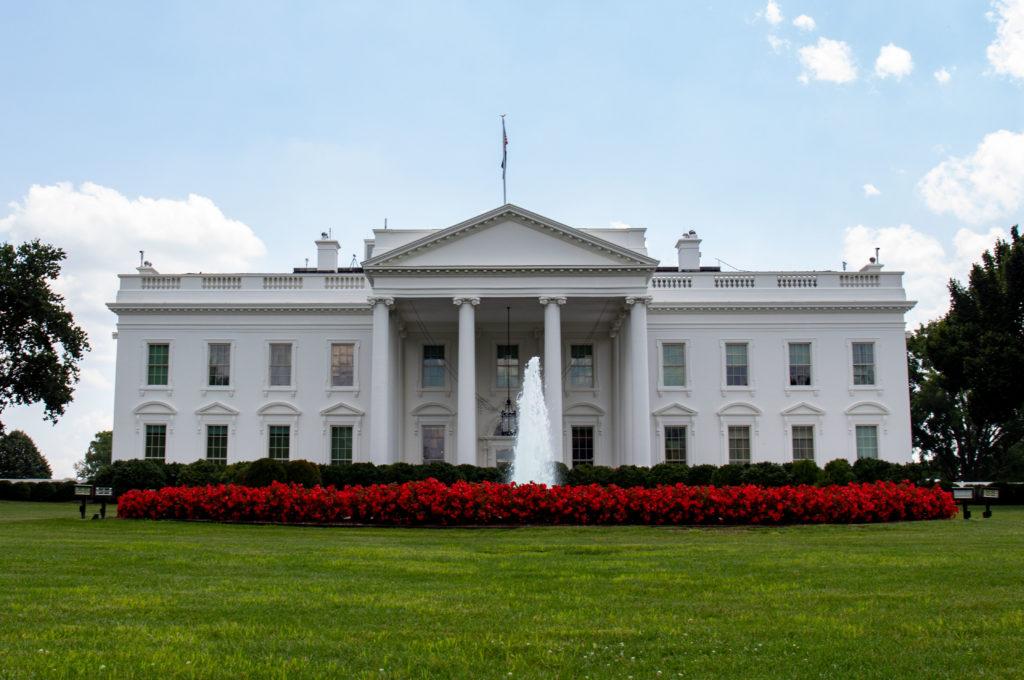A professor of ethnomusicology talked about her research on Uyghur cultural heritage and the Chinese government’s use of Uyghur music to reshape the historical narrative of the Xinjiang Uyghur Autonomous region at the Elliott School of International Affairs on Thursday.
Rachel Harris, SOAS University of London professor and author of the book “Soundscapes of Uyghur Islam,” said Xinjiang dance, a popular style of Uyghur dancing, swept across China last year and heavily influenced Chinese people to learn Uyghur dances and immerse themselves in the heritage of the Uyghur region. The conversation with moderator Eric Schluessel, an associate professor of history and international affairs, was hosted by the Sigur Center for Asian Studies.
Harris said her primary focus in Uyghur studies is to move beyond the basic understanding that the Uyghur region’s history is being comprehensively rewritten by the Chinese government. She said that new understandings of Uyghur history outside of those provided by Chinese government can allow people to incorporate fresh ideas into their own thoughts and beliefs on Uyghur culture.
“I’m thinking about the production of forms of emotional and embodied engagement and entanglements, such as we see now in the Xinjiang dance craze,” Harris said.
The Uyghur people are a mostly Muslim Turkic ethnic minority group in Xinjiang, China some of whom have been detained in “re-education camps” and forcibly sterilized by the Chinese government. As a result, governments and human rights organizations have accused the Chinese government of committing crimes against humanity and possibly genocide against the Uyghur people.
Harris said a “schizophrenia” is present in discourse surrounding events in the Uyghur region. She said while the incarceration of Uyghur people has garnered significant attention from global media and scholars, there has also been intensive messaging from the Chinese government that the Uyghur region has returned to normalcy, openly welcoming tourists to the area.
“We have a lot of detail about the policies of mass incarceration that really came into full swing, let’s say in 2017, involving hundreds of thousands, possibly over a million local people interned in a massive system of internment camps, along with the widespread destruction of religious heritage, intense high tech surveillance of the whole population, and large scale forced labor,” Harris said.
She said the Uyghur region has transformed to resemble a “huge tourist theme park” and that the year-on-year increase of over 117 percent with 265 million visitors in 2023 does not square with the strain on water sources in the arid Xinjiang region. She said that these seemingly contradictory images aren’t truly contrasting but can be viewed as two “phases” of a singular campaign of oppression against the native Uyghur people.
Harris said three separate “worlds” of Xinjiang exist that help understand the complex nature of the region’s issues. She said there’s the “tourist fantasy land,” the concealed world of continued incarceration and the world in between emergency and normality — where most Uyghurs live.
Harris said “symbolic value” exists in the dancing specifically of Uyghur women in the region, as she finds it “jarring” that they put on a smile while subject to incarceration by the Chinese government and facing policies such as the forced removal of their “veils” or hijabs.
“I really think it’s important that we think about the experience and the positionality of these young women who, really here on the front line of government policy,” Harris said. “They’re on the front line, literally, of these close-up encounters between tourists and welcoming locals.”
She said the Uyghur women dancers are a class of “forced laborers” and that, while their labor provides tourists with joy and makes Chinese people fall in love with Xinjiang, it is simultaneously “underpinned” by structural and physical violence from the Chinese government.
“Even if the tourists have forgotten about the internment camps, I don’t think that she has. She’s still living that reality, even though she dances and smiles,” she said.
Harris said the Chinese government is erasing other parts of Uyghur culture like traditional Uyghur music and sacred Uyghur shrines in Xinjiang as part of its anti-religious extremism campaigns. She said that despite this, the profound historical significance of these practices persists through modern-day scholars and avid learners who are passionate about keeping Uyghur culture alive.
“I think just one small thing that we can do outside the region is to keep remembering and keep retelling these stories, and keeping ourselves open to the sensibilities and the aesthetics that they convey,” Harris said.











